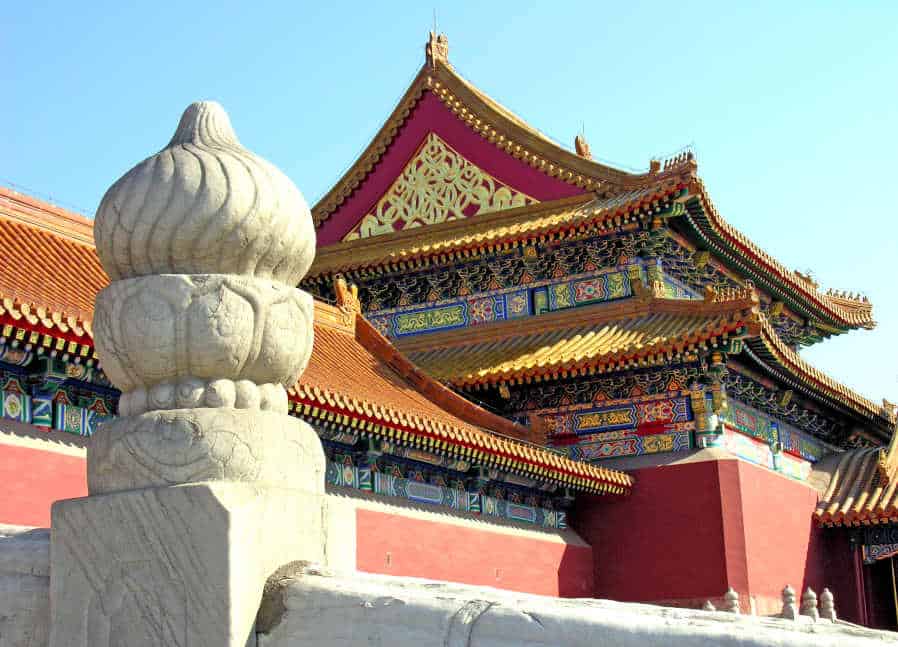With its thousands of years of history since the ancient dynasties to current hypermodern China, numerous Chinese architectures have been developed from simple villages to mesmerizing religious pagodas to massive imperial palatial complexes. However, some of them shone brighter than the others, and below are the five best famous buildings in China in our opinion.
The Forbidden City
The Forbidden City (宫 Gugong), located in Beijing was the imperial palace and grounds for the Qing and Ming Dynasties, the home for the last 24 emperors until the Qing dynasty. Built in 1406 to 1420, the Forbidden City was the largest and the most integrated building complex in China with 980 buildings in total.
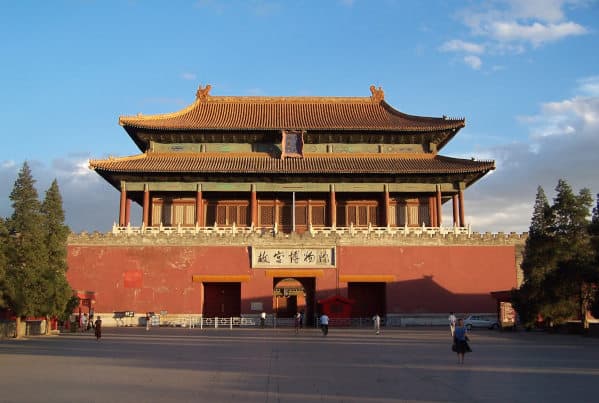
It is internationally recognized as one of, if not the best ancient palatial complex in the world, and since 1988, was recognized as UNESCO’s World Cultural Heritage Site. It is also one of China’s top tourism attractions today with more than 8 million visitors every year.
The Forbidden City is around 960 meters (3,150 feet) long from north to south and 750 meters (2,460 feet) from east to west. In total, it has an area of over 180 acres (more than 720,000 square meters) with more than 8,000 rooms.
HIstory
The Forbidden City was China’s imperial palace until 1924 when Pu Yi, the last emperor of China, was driven from the Inner Court. Until then for more than six centuries, ten emperors of the Qing dynasty and fourteen from the Ming dynasty had reigned in the imperial complex. With its 600-ish years of history.
The construction of the Imperial palace began in 1407 during the 5th year of the reign of Yongle, the third emperor of the Ming dynasty. It was completed fourteen years later in 1420. Before this palace, the imperial capital was located in Nanjing, and only after this imperial palace was completed in 1420 that the capital city was moved to Beijing.
The complex has yellow as the dominant color, the symbol of the Chinese royal family. For example, the roofs are built with yellow glazed tiles and even the bricks are made yellow with a special process.
The Great Wall
The Great Wall is arguably the most famous building in China and widely regarded as one of the greatest manmade buildings ever made. The Great Wall is the longest fortification structure in the world. If there were no destruction, the total length of the Great Wall would be 13,171 miles (or 21,196 km). However, parts of the Great Wall has been destroyed continuously throughout these centuries, whether by wars or naturally.
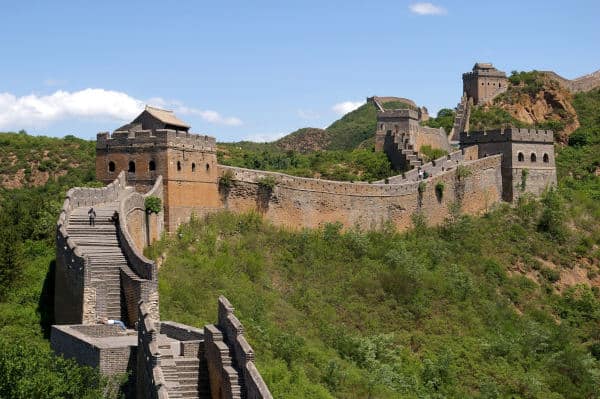
As a result of this, today we can only observe around 5,500 miles (to be exact, 8,851 kilometers) of the Great Wall still can be seen. However, with current technologies and the fact that the Chinese government is committed to protecting the Great Wall, we can expect the length won’t reduce any more.
Being a very long structure, the Great Wal consists of 101 different sections spread over 15 different provinces and cities. In Beijing alone, for example, we can see nine different sections of the great wall: Badaling, Mutianyu, Juyongguan Fortress, Jiankou, Gubeikou, Simatai, Jinshanling, Huanghuacheng, and Shuiguan.
Similar to Forbidden City, the Great Wall was listed as UNESCO’s World Cultural Heritage since 1987.
History
The Great Wall has 2,700 years worth of history spanning over 19 different dynasties, from 7th century BC to the 16th century CE. It is believed that a Duke of the Zhou Dynasty started to build the wall before the Warring States Period (770-221 BC). However, it was not yet the unified wall as we have today, and only during the Qin dynasty (221-207 BC) that the First Emperor of Qin unified the different Great Wall sections in Northern China.
Emperor Wu of the Han Dynasty (206 BC-220 CE) also contributed to extending the Great Wall to protect the Silk Road trade west to Yument pass and beyond. However, most of today’s Great Wall that we can see was built or renovated during the times of the Ming Dynasty (1368-1644).
Related reading: “Was The Great Wall of China Actually Effective?“
Potala Place
Potala Place, located on the Red Hill of central Lhasa, southern Tibet Autonomous Region, southwestern China. It is the highest ancient palace in the world with 12,359.55 feet height ( 3,767.19 m) at its highest point.
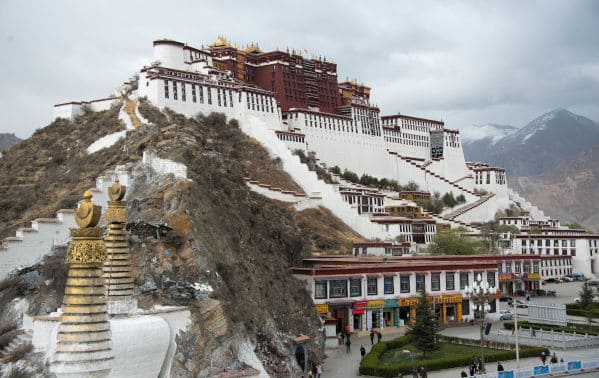
The name Potala is named after a holy hill in India, and is a Sanskrit word meaning “Abode of the Avalokitesvara (Guanyin)”. The palace is a 13-stiry palace with a thousand rooms up on the Red Hill and is mainly woods and stones. The palace is decorated with Balma Grass, a unique local willow branches.
Potala Palace is now the winter palace of the Dalai Lama, making it a symbol of cultural and economic communication between Tibet and China.
The Potala palace has more than 10,000 shrines with 200,000 statues, and with its vast inward-sloping walls and flat roofs, the Potala Palace resembles a huge fortress in appearance. At the southern base, we can see a large part of the palace enclosed by gates and walls while featuring great porticos on the inner side. From the top of the Palace, visitors can also enjoy the beautiful Lhasa Valley below.
History
According to the legend, the first palace of the Potala Place was built by King Songsten Gampo in 637 to greet his bride, Princess Wencheng of the Tang Dynasty. The site was then used as a meditation retreat by the King.
In 1645, the Great Fifth Dalai Lama, Lozang Gyatso started the construction of today’s Potala Palace to function as the seat of government. The Dalai Lama and the then Tibet’s government moved into the Potala White Palace (Potrang Karpo) in 1649, and since then the Potala Palace was used as the chief residence of the Dalai Lama.
Related reading: “Top 5 Famous Chinese Temples You Must Visit“
The Ming Dynasty Tombs
The Ming Dynasty Tombs are located in Beijing, to be exact, in 15.4 square miles (40 square km) of grad basin at the foot of Mount Tianshou in Changping district, around 50 km from the northwest of Beijing.
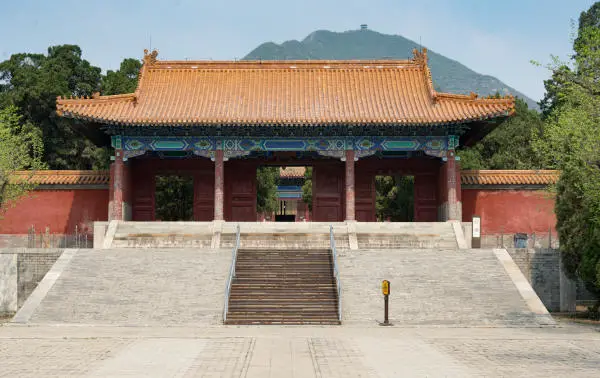
The imperial cemetery covers an area of 46 sq ft (120 sq km) and 13 Ming Dynasty emperors are buried in this complex, along with 23 empresses and a number of princes, princesses, and concubines. This is also why the complex is also called the 13 Mausoleums.
The Ming Dynasty Tombs have been a part of UNESCO’s World Cultural Heritage list since August 2003, and are currently the best-preserved ancient imperial tombs in China.
In the past, a wall was erected to surround the vast tomb area but has been removed to allow tourist visitations. To the south, the famous Tiger Valley and Boa Mountain stand on both sides of the tombs’ entrance, resembling a dragon and a tiger guarding the gate. The Chang Ling is the most famous tombs in this complex due to their impressive buildings and structures, and the Ding Tomb, with the excavated underground palace, is also a famous tourism attraction.
History
The first tomb of the complex is Chang Ling(the Tomb of Chang) and was built by Yongle, the third emperor of the Ming dynasty in 1409. This first tomb was erected under the main peak of Tianshou Shan.
It is said that the site itself was carefully chosen according to Feng Shui, and this is why the tombs are surrounded by high green mountains on three sides with a river flowing by, in keeping with the Feng Shui belief.
🧧 Use our free “ChinaGoGuide” app. Your personal guide to your journey to China. Try it now!
Xi’an City Wall
The Xi’an old city wall is China’s most well-preserved ancient city wall, and also the largest (that’s not the Great Wall). It was originally built as a military fortification in ancient times, but today it functions as a landmark dividing the outer part and inner part of the city of Xi’an. The Xi’an city itself is built around the wall, with the North Gate and the South Gate as the two main entrances to the inner city.
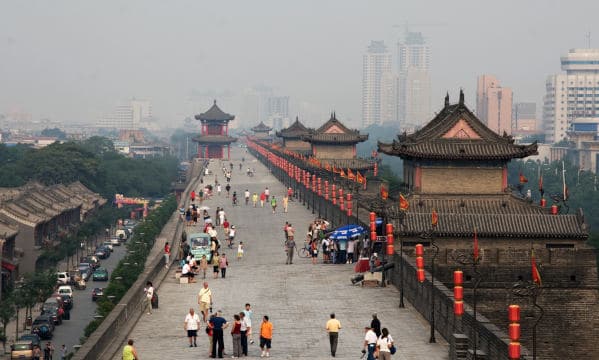
The Xi’an City Wall is massive, standing 12 meters tall and 18 meters wide at its wide. At the top, it is 15 meters wide so it is thicker than it is tall. Relatively recently in 1983, a ring city wall park was constructed, and today tourists can visit the integrated fortification system from the bridges, arrow towers, watchtowers, the moat, the gates, and so on.
There are 18 gates along the Xi’an City Wall in total, each of them consists of three towers: the gate tower, standing in front of the wall, the narrow tower in the middle with archer windows, and the innermost main tower that forms the entrance to the city. There are also 4 watchtowers, 98 ramparts, and 5,984 battlements in total.
History
he existing Xi’an City Wall was built in 1370 and completed in 1378 during the reign of Emperor Zhu Yuanzhang of the Ming Dynasty. However, it was actually an improvement of an existing Tang Dynasty structure (618-907 CE).
Zhu Yuanzhang unified the whole of China and formed the Ming Dynasty, and then sent orders to build city walls on a massive scale. The result, is the City Wall of Xi’an, making the area of Central Xi’an the most fortified and impregnable at that time.
Related reading: 23 Stunning Statues in China You Should Plan to Explore – Opens in new tab
An Introduction to Chinese History & Culture (Aff.link)
Dive into China’s rich past and intriguing present! From ancient dynasties to modern powerhouses, uncover Chinese culture facts, pivotal moments, and the captivating tales that have shaped this vast nation.
Stay in Touch
 Join our newsletter by using the forms on this website or click here!
Join our newsletter by using the forms on this website or click here! Follow us on Google News
Follow us on Google News Follow us on Facebook
Follow us on Facebook
Featured Image by Dennis Jarvis from Wikimedia Commons (CC BY-SA 2.0)

